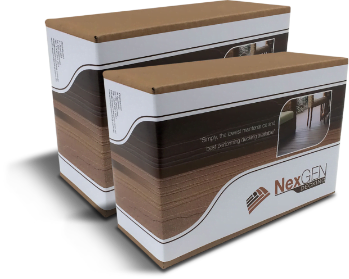How to Build Stairs – How to Build a Deck Part 6
This is part 6 in our How to Build a Deck Series.
As important as structure and stability are when it comes to building a deck, an outdoor space like this should match your personal style, as well as being a place to gather with friends and family. As such, you may have designed a deck with multiple levels to it, making well-constructed stairs an absolute must.
How to build stairs tip: It’s important to remember that as with any structure, you must follow the proper building codes for your area during construction. Planning ahead means that you can be sure that your stairs fall between the minimum and maximum distances allowed for things like risers and tread depth. In most building codes, the maximum rise between stairs is 200mm but check with your local council building inspector. To figure out the exact number of risers you’ll require, divide the overall height (either the height of the deck from the ground or the height difference between levels of the same deck) by this value and round the answer up. Subtract one from this figure to find the number of treads you’ll require.
How to build stairs tip: Multiplying the number of treads by the minimum of 260mm required by most building codes will give you the distance from the deck the stairs will land. Once you’ve adjusted the risers so that everything is uniform, you can begin constructing your stairs.
Not all composite decking is approved for use on stairs, but regardless of the decking used, it’s standard practice to place two decking courses side by side on the run of the stair (the horizontal surface) and one course on the rise (the vertical surface).
Most of the time, open risers are permitted so long as a sphere no larger than 100mm can pass through the opening. This is to prevent small children or animals from becoming trapped in the gaps between the stairs.
If you’re building stairs from the deck to the ground, make sure that the bottom of the stairs will be sitting on a solid, level surface, such as a concrete pad. This also goes for stairs between deck levels, but this shouldn’t be an issue if you’ve measured and built your frame carefully.
Remove the thickness of the tread from the bottom of the boards you’ll be using for your stringers (the thick pieces which support the stairs). From here, there will be some differences in your cuts depending on whether you intend to build inside or outside mounted stringers. If you’re using an inside mount, you’ll need to remove the thickness of the outside joist from the inside of the top rise. For outside mounted stringers, the thickness of the riser board should be removed from the back of the stringer.
With your stringer board laid flat, use the measurements you’ve figured earlier and mark out your cuts using a framing square. Trace the lines with a circular saw to complete your first stringer. Using the first stringer you’ve cut as a template for the others saves time and helps avoid miss-measuring on later stringers.
Stringers can be attached to either the inside or outside of the deck frame – nailed between boards on the inside, or fastened with angle brackets to the outside. If you plan to attach your stringers to the outside of the frame, you will need to add material to the bottom of the frame to ensure you have enough surface area to hold the brackets safely.
From there, lay down your decking and fasten securely to complete your stairs. There should ideally be a 13mm to 25mm nosing (or overhang) of the decking on each step.
Contact Us
How to build stairs is one of the more common questions we get asked are often considered one of the more difficult parts of deck construction, so feel free to contact us with any questions you may have or materials you might need. NexGEN offers a wide array of materials, products, and accessories to help make your deck the best it can be.
Products
Gallery
Contact
Direct Office Numbers
Adelaide – (08) 6316 0469
Brisbane – (07) 3041 6065
Melbourne – (03) 8672 6444
Sydney – (02) 8072 6220

